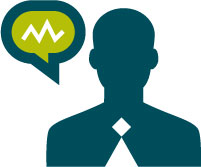If you’ve ever looked at a currency pair like EUR/USD or GBP/JPY and felt confused, you’re not alone. Most beginner traders overlook a basic but crucial part of forex trading: understanding the base and quote currencies. They may seem like small details, but getting them wrong can lead to big mistakes. Let’s break it down in a simple way so you can trade smarter and avoid losing money for silly reasons.

What Is a Base and Quote Currency?
In every currency pair, there are two parts: the base currency and the quote currency.
- Base currency: The base currency is the first currency shown in a trading pair and represents the asset you are buying or selling. It’s what you’re buying or selling.
- Quote currency: The quote currency appears second and indicates the amount required to purchase one unit of the base currency.
Take EUR/USD as an example. If this pair is priced at 1.10, it means you need 1.10 U.S. dollars to buy 1 euro. For instance, in the EUR/USD pair, the euro is listed first, making it the base currency, while the U.S. dollar comes second as the quote currency.
Sounds easy, right? But this is where things can go wrong for many traders.
Why This Matters in Real Trades
Let’s say you think the euro is going to get stronger. You decide to buy EUR/USD. But what if the dollar also gets stronger—just stronger than the euro? In that case, your trade might lose money, even though the euro moved in the direction you thought.
That’s because currency pairs don’t move based on just one currency. They move based on the relationship between the two. When you buy or sell a pair, you’re betting on one currency to outperform the other.
So, you’re never just trading one currency—you’re trading a comparison.
Pair Direction Makes All the Difference
Here’s a simple example: imagine you’re looking at USD/JPY and see the price going up. You might think, “The dollar is strong—I should buy.” Meanwhile, someone else sees JPY/USD going down and thinks, “The yen is weak—I should sell.”
Both of you are looking at the same currencies but from different angles. If the U.S. dollar drops, your position in USD/JPY might take a hit. But the other trader might actually profit. That’s how powerful pair direction is—it changes how you understand the trade.
3 Tips to Avoid Mistakes with Base and Quote Currencies
- Know Which One You’re Trading
When you’re buying a pair, you’re buying the base currency and selling the quote currency. When you sell a pair, it’s the other way around. Keep this simple rule in your mind every time you trade. Write it down if it helps.
- Check Both Currencies for News
Don’t just look at the economy of the base currency. Look at the quote currency too. A strong report from the U.S. can push USD higher, even if the base currency doesn’t move. That can change your trade completely. So always stay updated with the latest financial news for both currencies in the pair.
- Use a Simple “Double Check” Before You Trade
Ask yourself two questions before hitting that buy or sell button:
- “Which currency am I actually betting on?” (That’s the base.)
- “Is there any reason the quote currency might get stronger or weaker?”
This habit can save you from jumping into a bad trade without realizing it.
Don’t Let Leverage Fool You
Leverage is powerful—but dangerous. If you’re using 10:1 leverage on an EUR/USD trade, you’re controlling ten times more money than you put in. Even a small change in the price can lead to big wins—or big losses.
And guess what? That small price change could be caused by something happening with the quote currency—not the base. Understanding both parts of a currency pair is crucial. If you focus on just one and ignore the other, you might misjudge the trade—and that could cost you more than you expect.

Final Thoughts: Your Trade Is Only as Smart as your Understanding
Base and quote currencies aren’t just labels—they’re the foundation of your trade. Misunderstanding them is like going on a road trip without knowing which direction you’re headed.
So before your next trade, stop and ask:
- Who am I really betting on here?
- What could move this pair in either direction?
Once you make this part of your routine, your trades will start to make more sense—and you’ll be less likely to get blind sided.


